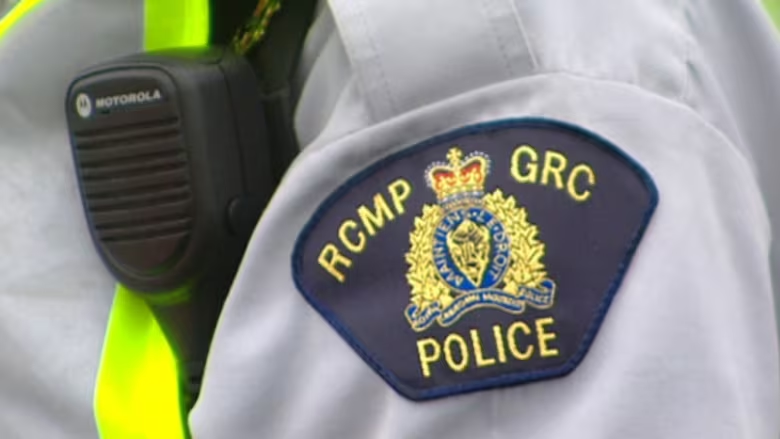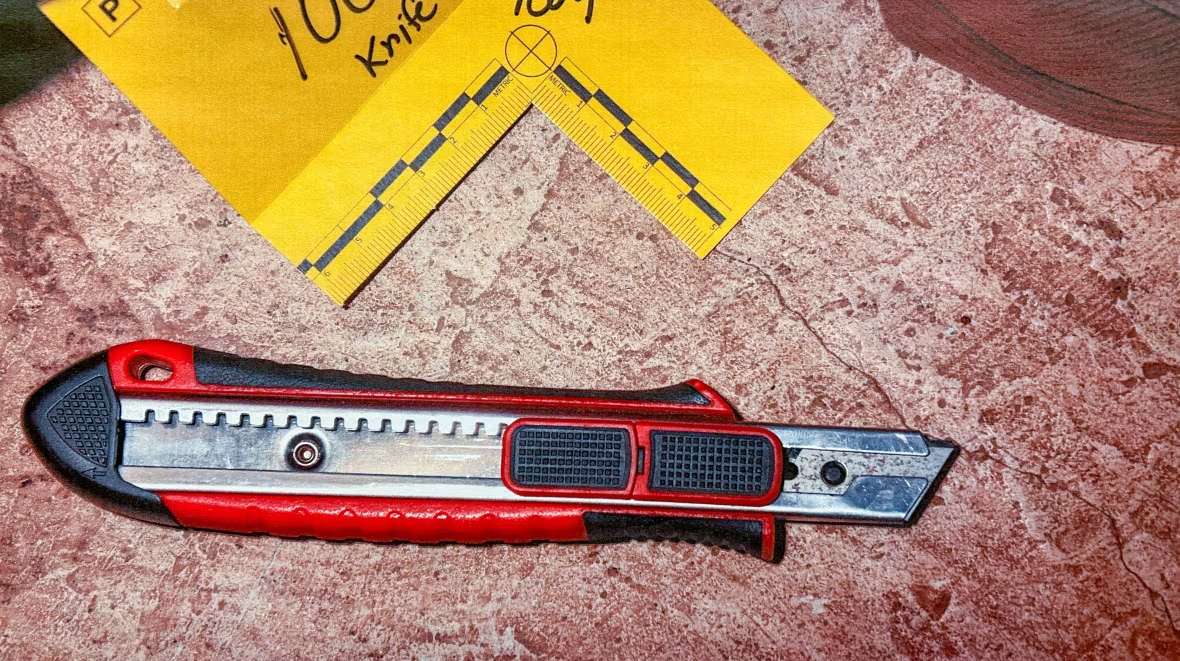Inquest into Hampton RCMP shooting death ends with 6 recommendations
Ryan Nowlan was shot by 2 officers at his Kingston Peninsula home in 2021

A coroner's inquest into the death of a man who was shot by Hampton RCMP while responding to a domestic violence call at his home has ended with six recommendations to prevent a similar death.
The jury delivered its recommendations Wednesday afternoon after hearing evidence from 12 witnesses over two days regarding the death of Ryan Nowlan.
Nowlan, 39, was Tasered and then shot twice by two officers after they found him armed with a utility knife in a closet in his basement during the early morning hours Dec. 31, 2021. He had choked his ex-partner, slammed her head into a door and threatened to burn down the home they still shared after he was woken up by one of their three children who got up to use the washroom.
Nowlan was later pronounced dead at the Saint John Regional Hospital from the gunshot wounds to his chest and abdomen, and the blood loss associated with those — at least a litre, the pathologist testified. The coroner's death certificate lists the manner of death as homicide.
The five jurors recommended more extensive and continual training for law enforcement regarding domestic violence.

Officers involved in a domestic dispute should also have "adequate background knowledge" on a suspect prior to entering the premises, they said.
Re-entering potential high-threat areas to retrieve non-vital belongings should be avoided, as should further contact between a victim and perpetrator in domestic disputes.
In addition, the jury recommended that people with a history of restraining orders in domestic violence cases be required to receive mental health treatment and that victims of domestic violence have better access to available resources.

Presiding coroner Michael Johnston said he'll deliver the recommendations to the relevant agencies.
Those agencies will have about six months to respond, he said. The recommendations are comprehensive and they need time to consider their impact.
Johnston noted they are recommendations only — not orders, but any responses will be included in the coroner's annual report, he said.
"It is through this process that the community can be satisfied that the death has not been overlooked, concealed or ignored."
Domestic violence death review pending
The province's domestic violence death review committee will now review Nowlan's case, according to deputy chief coroner of administration Emily Caissy, who chairs the committee.
A review has been "on pause" pending the outcome of the coroner's inquest, she testified Wednesday.
The multidisciplinary committee, made up of scholars, physicians, police officers and frontline workers, reviews all deaths where domestic violence was a contributing factor.
The investigating coroner, Walt McKinney, determined domestic violence was a contributing factor in Nowlan's case, said Caissy. He identified 28 of the 43 potential "lethality" or risk factors, she said.
These included a history of domestic violence, including an assault while the victim was pregnant, prior threats to kill the victim, prior stalking or harassment of the victim, prior hostage-taking or forcible confinement, and threats against the children.

Other factors included an escalation of violence, a sense of fear of the perpetrator, having a protective order or peace bond, excessive alcohol or drug use by the perpetrator, depression in the opinion of family, friends or acquaintances, other mental health or psychiatric problems, and a failure to comply with authority
The committee, which aims to reduce the incidence of deaths attributed to domestic violence, typically comes up with recommendations, said Caissy.
For example, it has previously recommended more training on domestic violence for police officers and other agencies, such as the nurses' association, she said. It has also recommended awareness campaigns to ensure people are aware of the risk factors.
Knife dictates firearm being drawn, instructor testifies
Earlier in the day the jury heard from Sgt. Luc Samson of the Grand-Bay Westfield RCMP, who was the on-call sergeant for the district on the day of the shooting.
Samson, a 17-year veteran of the RCMP and a use-of-force instructor, said "there's a million things" that police consider going into a situation.
These can include the person's behaviour, criminal record, mental health or history of substance abuse, he said, along with "situational factors," such as where the incident is occurring and whether any children are present, as well as their personal experience dealing with similar circumstances.
Options on the "continuum of force" range from mere police presence, "all the way to lethal force being used where we fear death or grievous body harm" to police or members of the public, said Samson.

No two situations are the same and the use of force is "based on the totality of the situation."
But he noted officers are taught at the RCMP academy that if someone is armed with an edged weapon, such as a knife or box-cutter, it's important to draw their firearm.
"The knife scenario is a pretty basic one because it's a very easy, recognizable risk," said Samson. "'He's got a knife, I could die.'"
RCMP also have a 21-foot rule when it comes to edged weapons, he told the jury.
"The odds are 99 per cent of the time the person will close [that] distance to you faster than you will have the reaction, 'Holy smokes, someone's coming at me with a knife, I need to draw my firearm' — draw it and then discharge it. … And it can be a fatal encounter for you."
'Only option available'
Luc Côté, team commander of Nova Scotia's Serious Incident Response Team (SiRT), testified that shooting Nowlan was "the only option available to the officers."
SiRT, an independent police watchdog agency, was called in to investigate the officer-involved shooting and found no grounds to lay charges against the two officers. The force used was "justified and not excessive," the May 2022 report concluded.
Côté, who became involved in the Nowlan file as an investigator in March 2022 when the previous investigator retired, said not all cases are "as clear as what we have in this case."

Had Nowlan dropped the knife, or had nothing in his hands and put his hands up, "I know it's hindsight … but there's a high likelihood that that would have been the end of the interaction," he said. The officers would have simply arrested him and taken him into custody.
"Mr. Nowlan had a say in what took place on that day," said Côté. "He made a conscious decision …to pick up a utility knife, he made the conscious decision to refuse to drop the knife.
"He also just made the decision to lunge at the police officers."
In cardiac arrest more than 30 minutes
The jury also heard from the emergency room physician who treated Nowlan. Dr. Jaynanand Mekwan said Nowlan was in cardiac arrest when he arrived.
The rate of recovery from cardiac arrest in a non-traumatic event is only about 10 to 30 per cent, he said, and in a traumatic event, such as a shooting, it drops to about two per cent "in the most favourable circumstances."
Mekwan made an incision in Nowlan's chest to try to relieve the pressure and blood "started to pour out," but his heart never restarted. Mekwan declared Nowlan dead at 6:03 a.m., after more than 30 minutes without a pulse.
Forensic pathologist Dr. Ken Obenson, who performed the autopsy, said the gunshot wound to Nowlan's chest was the "most severe," as it caused "extensive trauma" to his liver, spleen and left kidney.
A toxicology analysis showed the presence of cannabis, but no illicit drugs or alcohol.
